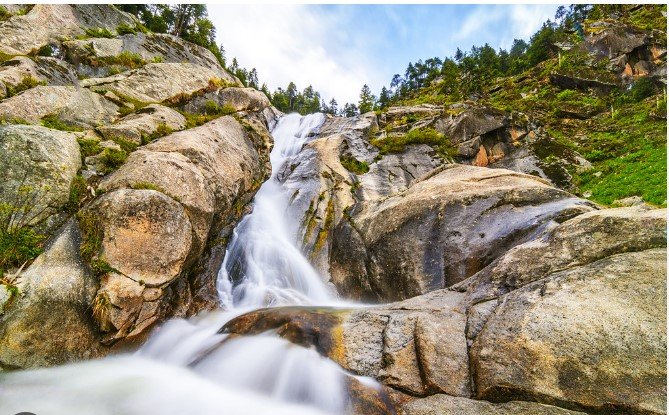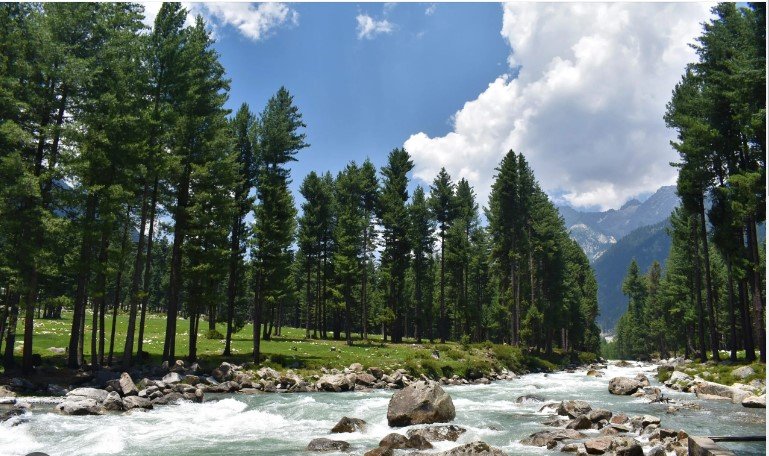Travel Guide to Kumrat Valley: Even the noise of water calms down here.
There are uncountable beautiful places in Pakistan, but Kumrat has matchless beauty, though, the Kumrat Valley has not been able to
attract tourists despite its splendid beauty.
Claims to make Lahore Paris or the country Switzerland, you may have heard from the mouths of politicians, but when the Swiss tourists
themselves are seen comparing a place in Pakistan with the beautiful scenery of their country, a visit is made.
Travel Guide to Kumrat Valley
Location of Kumrat Valley:

Kumrat Valley in the Upper Dir District of Khyber Pakhtunkhwa Province, about 384 km from Islamabad, the capital of Pakistan, is known
locally as the ‘Switzerland of Pakistan’ by the locals.
If you plan to spend a few days in the natural environment away from the hustle and bustle of the world and keep your eyes on the Kumrat
Valley of choice, keep in mind that you will face some difficulties.
But after passing through them, when you reach the destination, this valley can turn out to be more beautiful than you can imagine in your
mind of the natural scenery.
You will face some difficulties in reaching Kamrat, but when you reach the destination, your heart will be happy!
Situated amidst snow-capped mountains, the valley has many lush pastures.
Wherever you go, the water of the Panjkora River, which hits the rocks, entertains you like light music, and the aroma from the pine forests
reminds you of the natural beauty you envisioned coming here.
You get peace of mind, but to get here you have to go to great lengths. Had it not been so, the Kumrat Valley would have been one of the
most famous tourist destinations in the country, but it is not.
Umerkot Sindh: The land of Love, Peace, and Harmony
Difficult Journey:

And the reasons for that are the same problems we mentioned at the beginning. Traveling on the rockiest roads is at the top of the list.
This is followed by the unavailability of internet and mobile service and then the hiking required to reach here is not easy.
The distance from Islamabad to Kumrat Valley is 384 km, which is a little less than the distance from Islamabad to Lahore but it is
fixed in at least 11 hours.
The distance from this place to Kumrat is only 12 kilometers, but it takes another hour and a half to cover.
When you enter the valley of Kumrat, you can see the river Kumrat, a tributary of the Panjkora, flowing at the foot of the mountains,
on the other side there are small villages, and then the scenic places where only the tourists who want to see a natural beauty come.
Accommodation costs

Here you will also see a few newly built hotels whose local owners seem to be trying to provide the necessities of life to the tourists
but success in this endeavor cannot be guaranteed.
One of the special things about this hotel located at the beginning of Kumrat Valley was that after Sheringal only mobile signals were
coming here and that too only of Mobilink.
This is not a big deal, but if you know that there is no possibility for them, then there is no problem in informing your relatives about
their welfare.
Hotel rooms are usually available here from Rs 2,000 to Rs 6,000 per night depending on the amenities. However, this is not the only
settlement in the area.
A camping facility is available for one to two thousand rupees, while huts made of wood and tin are available for fifteen hundred to two
thousand rupees.
If you want to enjoy the beauty of nature to the fullest and you have your camping arrangements, there is no charge for setting up camp where
there is space between the trees.
The Taste of Trout:

You may have been fooled many times by the name of trout in the cities but here you can eat them too and in that too you have a choice
whether it is of ‘fish pound’ or river.
Trout hunting is banned all over Pakistan but these fish are farmed here. We also enjoyed the trout before heading out and were tired of
planning a trip to the valley the next morning.
“If you don’t have a jeep, you can’t live.”
If you do not have a four-by-four jeep in Kumrat Valley, you will not be able to travel further at any cost.
So if you are in such a situation, you have to seek the help of local people who are always ready to help you lighten your pockets.
Jeeps are available for rent. It was found out that the rent up to Chashma is seven thousand and if you want to go to Dujanga, you have to
pay ten thousand. It is clear from the rent that Dujanga is the longest location.
Yes, this is the last place as far as the Jeep goes, but from here on out it also ends and you have to go hiking.
The distance from the hotel to Dujanga is only 24 km but it is fixed in at least three and a half hours and the reason is that there are rocks
on this route and no galaxy.
Raushi Dub

After starting the journey to Kumrat Valley, the first place is Raushi Dub.
Locals call it a field that was once full of flowers but now potatoes are grown here for two reasons one is economy and the other is fear.
Kumrat Falls

If you go beyond Raushi Dub, you will come to Kumrat Falls. To reach the waterfall, you have to get off the jeep and walk for 20 minutes.
This waterfall falls from a high mountain and continues throughout the year except during the few days of winter when the extreme cold and snow freeze it.
Aside from the cold, its water was very cold even in summer and it is not possible to take a bath in it even in the heat of July.
Tubot Dub

A little further on, another bowl-like field greets you, called the Tubot Dub.
Apart from potatoes, peas, turnips, cabbage, and salads are also grown here but the purpose of this cultivation is to feed the locals and their families.
Here a farmer gave us potatoes whose fritters after half an hour’s journey we ate from a shopkeeper at Kala Chashma and all the travelers agreed that they had never eaten more delicious potato fritters.
Kala Chashma Black fountain

The place where we stop to eat fritters is called Kala Chashma. The water of this spring is very clear but nobody knows why someone named
it’s Kala Chashma.
Probably because of the accumulation of moss where it comes from, people started calling it a black spring.
The water in this spring is so cold that it is impossible to hold it even for a minute. The locals also drink this water as medicine.
According to him, it brings happiness and freshness and brings relief to the body which prevents the path of diseases.
There is only one cure for this ailment and that is to focus on the beautiful scenery along the nominal road which was enough to make you forget
the biggest ailment.
Bachartan:
If you go beyond the black glasses, your travel test becomes more severe.
The number and volume of the rocks increase and you get tired and start thinking about returning.
But the locals force you to move on, saying, ‘You haven’t seen Kumrat yet.’
There is also a small village Bachartan and a beautiful pasture or banda where flowers are still there.
Probably a factor as to why they’re doing so poorly on foot.
To cross the river, the locals cut down a large tree and placed it over the river. The locals pass through this ‘bridge’ without fear, but for
us citizens, this bridge proved to be straight.
Dujanga
There were only eight kilometers to go from Bacharatan to Dujanga but it is painfully difficult. There are many difficult and narrow paths.
Dujanga is the confluence of three different valleys and vehicles cannot pass through here.
To the east are Kundal Shii Banda, and to the west are Kashkun Banda and Shazur Banda, where one can walk.
Dujanga is an area where there is no accommodation and you can’t spend the night here but the scenery was such that no one in the whole team
wanted to go back.
These places are not part of the Kumrat Valley but if you come here, seeing them is like going to the dying Ayubia.
The only problem is that the journey to these two places is difficult.
Difficulties and ease
In the area of Kumrat Valley, you will find only two things in the name of convenience.
One is pure and healthy food and the other is a natural environment. In addition, the market may be full of problems.
But in the face of the natural beauty of the Kumrat Valley, these difficulties can be overcome. There is no road here and that is why people do not turn here.
Most of the people in Pakistan do not have the vehicles they can drive here. Jeeps are a must here so visitors are not encouraged.
The road is painful and you have to travel on foot.
If someone gets stuck in the rain or as a result of a natural disaster, it only helps the locals who are very supportive but there is no official
arrangement to get them out.
Here the locals speak less to the tourists and they hardly understand Urdu. Most of the people here speak Pashto or Kohistani, there is no
question of English.
Local women are invisible, and if anyone is seen, their heads and knees are covered with a black sheet. Even the eyes cannot see. Maybe
that’s why female tourists are reluctant to come here.
People here don’t like the camera and if you take a picture with a population in the background, people will tell you that there is a population.
That’s why we had to be very careful in flying our drones for photography.
However, the area is very peaceful and locals respect and protect tourists, especially women. The dangers that women generally face in urban
life are very small here.

